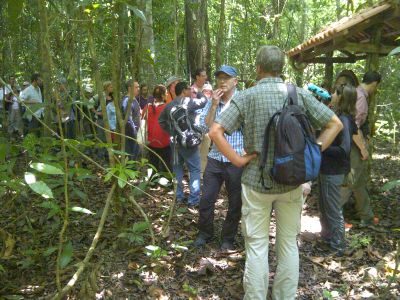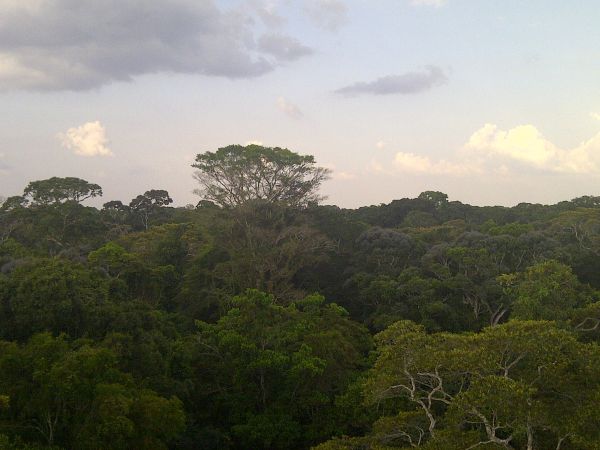About AMAZALERT
AMAZALERT examined how global and regional climate and land-use changes will impact Amazonian forests, agriculture, waters, and people; and how these impacts feed back onto climate.
“The AMAZALERT project has received funding from the European Union’s Seventh Framework Programme for research, technological development and demonstration under grant agreement no 282664, and was co-funded by many national agencies an institutes.”
Day 3 of the joint AMAZALERT and ROBIN meeting: Rainforest trip
On Wednesday October 8, the participants headed off to the Tapajos National Forest; a forest area for observation and research for over 30 years, which was established in 1974 and has a wealth of natural resources that provides food and non-food products to the (traditional and indigenous) communities. The area is facing problems with deforestation, as a lot of other areas are in the Amazonia.
First there was a meeting with indigenous people in a small village, which are facing problems related to deforestation, pollution in the nearby river, and specific socio-economic problems.

Next a walking tour was made through the rain forest. Short presentations were being held regarding the disturbance activities from the past, history of the nature reservation and on small vegetation and trees.

After a nice lunch, a climb to the top of the flux tower measuring greenhouse gases was made. A great view on the rainforest canopy could be seen.

This area is one of the ROBIN research locations and the LBA (Large-scale Biodiversity-Atmosphere Experiment in Amazonia) science work in the region.


